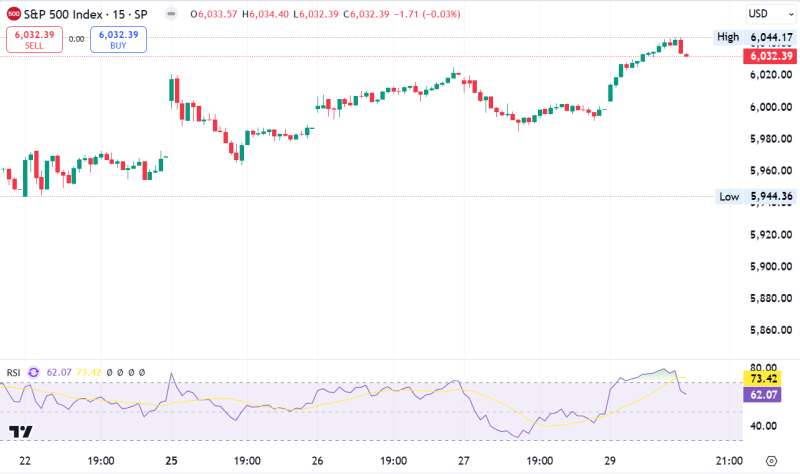
Leveraging ChatGPT for enhanced trading strategies
Recently stock trading has been going through a major change in technology. The industry had been dominated by human brokers and personal relationships on stock exchange trading floors. Now the advent of high-speed internet, advanced computing, and artificial intelligence (AI) has revolutionised this industry.
ChatGPT’s Role in Trading – Market Analysis:
For example, ChatGPT, an AI language model developed by OpenAI, has emerged as a major player. Its ability to process vast amounts of data has made it a valuable tool for traders seeking to gain an advantage.
One of ChatGPT’s relevant applications in stock trading is market analysis. Clever large language models (LLMs), powered by advanced machine learning (ML) algorithms and trained on an enormous number of parameters, can analyse and learn from the vast amounts of data they are fed, for example, from news articles and social media posts. They are then able to generate original sentiment analysis, as it’s known, which can help to gauge the mood of the market, whether it’s bullish or bearish.
var cookie_token = $.cookie(‘token’);
url = window.location.href;
var param = url.split(‘?’)[1]
console.log(url);
if ($.cookie(‘token’) && param != ‘webview=true’) {
var settings = {
“url”: “https://my.financebrokerage.com/api/transactions/my”,
“method”: “GET”,
“timeout”: 0,
“headers”: {
“Content-Type”: “application/json”,
“Authorization”: `Bearer ${cookie_token}`
},
};
$.ajax(settings).done(function (response) {
if (response[0].status == “Approved”) {
$(‘.blur’).html(`
Furthermore, ChatGPT assists in trend forecasting by identifying patterns and correlations within historical data. By analyzing these data sets, it can help predict potential market movements. For instance, if the AI identifies a recurring pattern that preceded a stock’s rise in the past, then the traders might be able to use this information to make a profitable trade in the present.
ChatGPT’s Role in Trading – Decision-Making:
Having the correct analysis leads us to the all-important area of decision-making. These days financial markets operate at a rapid pace, and traders must respond swiftly to changing conditions. If they cannot do this, they might miss opportunities. However, current algorithms can process real-time data feeds and analyse them instantaneously, providing real-time insights.
As a follow-on from these insights, the algorithms then generate trade recommendations, even down to the level of suggesting optimal entry and exit points for trades. This information is valuable for traders who must manage and trade multiple positions simultaneously.
Automated Trading:
At this stage, the human broker would have stepped in to make those trades indicated by AI. But this human intervention would slow the process down to the speed at which a human can act, again possibly missing an opportunity. Therefore, companies are using automation for trading as well, and this involves complex algorithms which operate at lightning-fast speeds.
In this way, they can exploit any market inefficiencies or arbitrage opportunities, the latter being the possibility to instantaneously buy something for a low price and sell it for a higher price. This price difference will be short-lived, and very small, but if such trading is done at volume, then the total gains can be substantial. Also, automated trading systems are very useful as they operate around the clock, ensuring that opportunities are not missed, even when human traders are unavailable.
Risk Management:
But can companies completely trust AI to carry out all these trades on their behalf? The answer is that they can, but as there will always be risk in the markets, they will need to take steps to control and mitigate this. This is called risk management. As technology continues to reshape the landscape of stock trading, risk management and regulatory compliance are important considerations for all market participants.
Risk management is carried out by a Risk Assessor. This is someone who evaluates the risk profile of an organization’s IT systems, determines the potential impact of security breaches, and works with management to reduce risks to an acceptable level. To this end, automated risk management systems employ real-time monitoring tools and circuit breakers to mitigate the impact of sudden market fluctuations and prevent catastrophic losses.
Case Study:
As for how ChatGPT has performed in the market, a research report using rigorous research methodology has been released by the finance department at the University of Florida, and it showed a trading algorithm which delivered 500% returns in the stock market. The researchers basically found that ChatGPT outperformed all existing solutions on the market, and it benefited from sentiment analysis, a strategy already mentioned above, and which is a part of several automated trading strategies by well-known hedge funds like DE Shaw and Two Sigma.
Future Outlook:
We have entered a brave new world of computers using algorithms to trade our stocks and our money. For now, fortunes have been and are being made. But one wonders how AI would have handled the challenges of the 2008 stock market crash. And as Robert Harris showed in his novel the Fear Index, there can be unforeseen consequences when an algorithm takes over and even those in charge are unable to control what happens.
Conclusion:
The algorithms available these days through AI enable better market analysis and should lead to better decision-making. In conjunction with automated trading, the modern trader can look forward to an era of increased productivity and uncovering previously hidden Alpha. This is progress, but it must come with solid risk management. In the words of AllianceBernstein, “When strategically deployed, AI can help active equity investors make better investment decisions. However, we believe that AI is a tool that must be used in conjunction with human expertise and judgment.”
`);
} else {
$(‘.blur’).css({
‘background’: ‘linear-gradient(95deg, #4e4e4e 25%, #000 45%, #bbb 75%, #FFFFFF 100%) 98%/200% 100%’,
‘text-transform’: ‘inherit’,
‘-webkit-background-clip’: ‘text’,
‘background-clip’: ‘text’,
‘-webkit-text-fill-color’: ‘transparent’
})
$(“.wpb_content_element”).append(`
Want to read more?
Click on the button below to access all premium content
articles by purchasing one of our educational packages
GET PREMIUM
`)
}
});
} else {
$(‘.blur’).css({
‘background’: ‘linear-gradient(95deg, #4e4e4e 25%, #000 45%, #bbb 75%, #FFFFFF 100%) 98%/200% 100%’,
‘text-transform’: ‘inherit’,
‘-webkit-background-clip’: ‘text’,
‘background-clip’: ‘text’,
‘-webkit-text-fill-color’: ‘transparent’
})
$(“.wpb_content_element”).append(`
Want to read more?
Click on the button below to access all premium content
articles by purchasing one of our educational packages
`)
}
});










